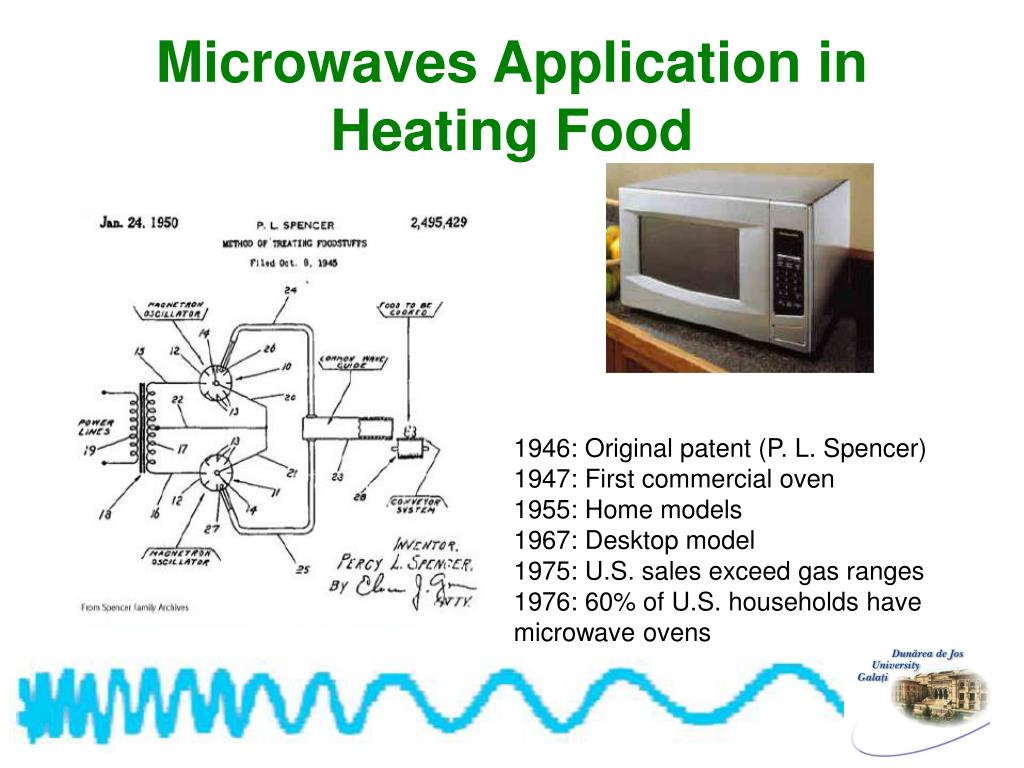
Using microwave heating in food preservation is a proven technique that has been in use since the 1950s. This technology has been used in a variety of ways, including reducing water activity (Aw) and drying time (Td) for food products. However, it has also been shown that microwave radiation can cause enzyme activity to decrease, which could pose a problem for the health of food products.
Disadvantages of microwave heating
Despite the many advantages of microwave heating, it has its drawbacks. The most obvious disadvantages are nonuniform temperature distribution, uneven cooking, and food poisoning.
Microwave heating is used for a variety of applications in food processing, including cooking, preserving, and tempering. It provides rapid and precise heating, which improves food safety. It also reduces thermal processing times and costs.
Microwaves produce rapid, precise heating, which can be turned on and off instantly. They are also highly controllable. They are more efficient than conventional systems, which means they can save a lot of energy. They are also safer for use in the home.
Nonthermal effect of microwaves on microorganisms
Several investigators have reported that the nonthermal effects of microwaves on microorganisms in food preservation are not lethal. However, the exact mechanism is still unclear. It has been proposed that the nonthermal effects of microwaves are due to direct stabilizing interaction of the electric field with certain molecules.
Microorganisms respond differently to inactivation by microwaves. Therefore, the initial cell concentration and microwave power affects the damage on viable cells. These factors are also affected by humidity and temperature.
In the study, the effects of microwave radiation on Escherichia coli, Staphylococcus aureus and Bacillus cereus were investigated. Each bacteria was tested at different microwave power levels and temperatures. The results showed that the viable counts of bacteria decreased with increased microwave heating temperatures. The initial concentration of each bacterial strain was also examined. The microorganisms were suspended in sterile saline solution and spread over a standard agar plate.
Effects of microwave radiation on enzyme activity
Various types of microwaves are used in different fields, including waste treatment, disinfection, and sterilization. These microwaves are often used to achieve thermal effects, but they can also have nonthermal effects on microorganisms. The nonthermal effects of MWs have been investigated by many researchers from different fields. However, some researchers have reported no nonthermal effects of MWs while others have reported the nonthermal effects of MWs.
One of the most widely studied nonthermal effects of MWs is the ability of MWs to inactivate a variety of microorganisms. However, a better understanding of the mode of action of these nonthermal effects is still needed.
Microwave sterilization reduces microbial populations in oak barrels
Using high-frequency microwave radiation, microorganisms in oak barrels for food preservation have been reduced to a small fraction. The treatment did not affect the chemical composition of the wood, and did not change the structure of the wood.
Oak staves were soaked in a solution of YPG, which contains yeast extract at 10 g/L and bactopeptone at 10 g/L. After the staves were treated, the microbial population was counted. The results showed that the microwave treatment reduced the number of yeast by 36-38%. It also reduced the number of lactic acid bacteria by 91-100%.
Microwave sterilization reduces the water activity (Aw) of a food product
Various processes for sterilization are available for aqueous compositions. Pasteurization is a popular method of inactivating microorganisms. During the pasteurization process, food is heated to a temperature that is high enough to kill microorganisms. Other methods for sterilization include heating of pieces and degassing. These procedures can be adjusted to suit the ingredients and quality of the product. However, some bacteria can survive these procedures.
Microwave (MW) processing is a rapid heating technique that generates heat within the material. This technique is used to develop shelf-stable foods. It is also used to produce canned foods. It has many advantages over conventional heating. These include faster processing time, improved texture, and better retention of nutrients. It can also be used to create new textures and products.
Microwave sterilization reduces the drying time (Td) of a food product
Using microwave technology to reduce the drying time of a food product has numerous applications in food preparation. For example, it is used to inactivate microorganisms, decontaminate foods, reduce the water activity of foods, and enhance their organoleptic properties. It is also used for sterilization.
Generally, the shortest time to a certain degree of heat transfer from the food component is the best way to get the desired quality. This is because of the low thermal conductivities of foods. However, the microwave heat form is more efficient than conventional heat forms.
Modeling electromagnetic interactions
Various studies have examined the nonthermal effects of oven on food. However, the possibility of these effects has not been conclusively proven.
In food preservation, the oven drying method has become an important method of preserving food. It is a rapid method of heating and drying that can increase the fluidity of water. It can also reduce the nutritional loss of food. However, its main drawbacks are thermal runaway and heating heterogeneity.
The effect of moisture content on microwave heating is mainly determined by the dielectric properties of the material. The component with the highest dielectric constant tends to concentrate energy.

